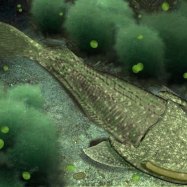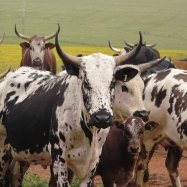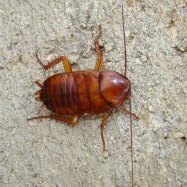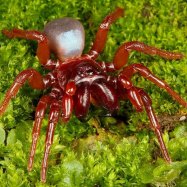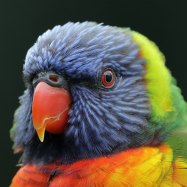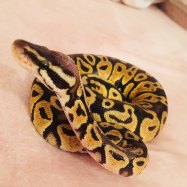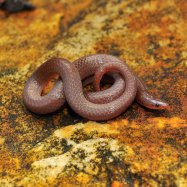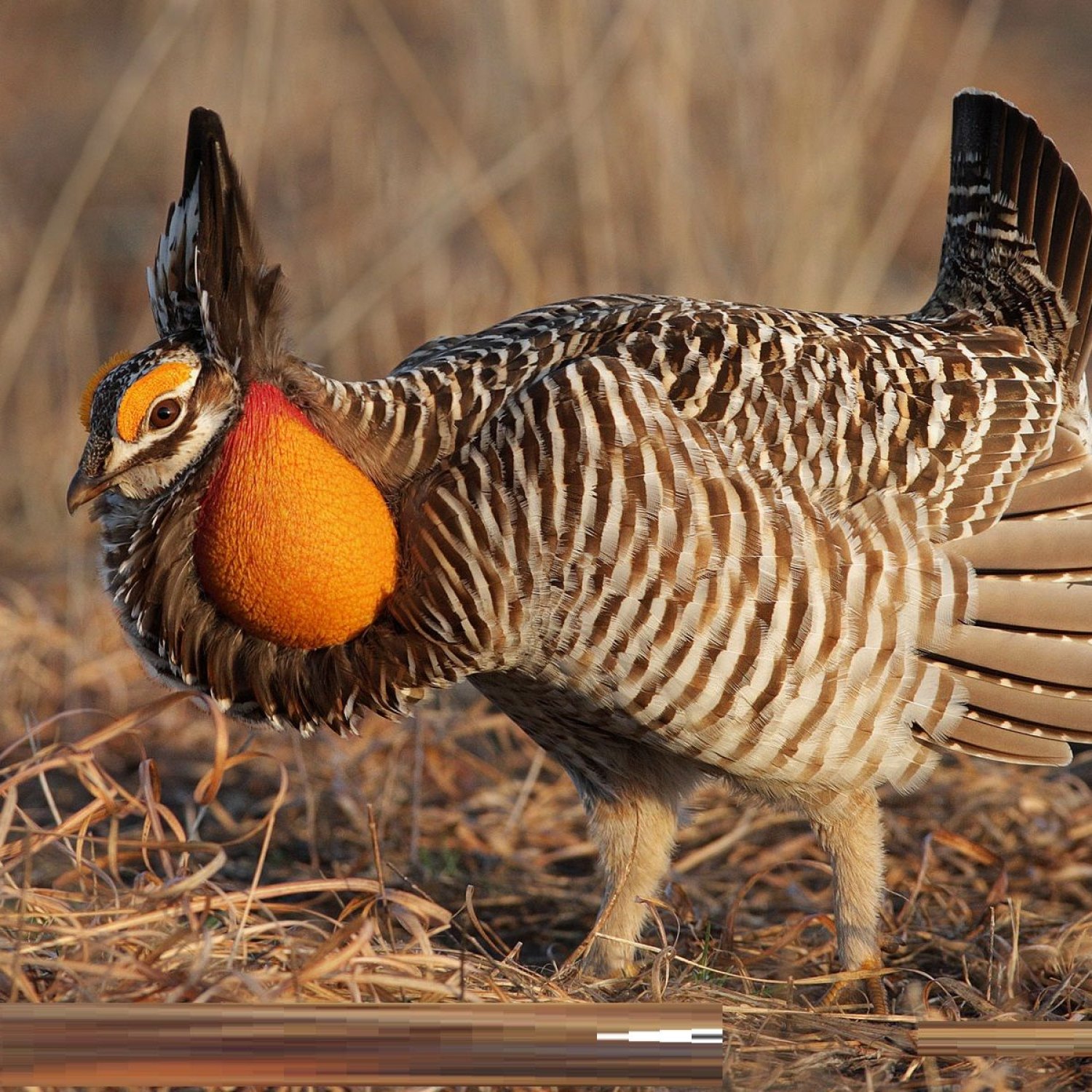
Prairie Chicken
17-19 inches (43-48 cm)
Prairie chickens, also known as grouse, are large, plump-bodied birds found in the tallgrass prairies and sagebrush steppe regions of the central and western United States. They measure 17-19 inches (43-48 cm) in length and belong to the Phasianidae family. With short tails and rounded wings, they are skilled at navigating their grassland habitats. Learn more about these fascinating creatures and observe them in their natural habitat.
Animal Details Summary:
Common Name: Greater Prairie Chicken
Kingdom: Animalia
Habitat: Grasslands and prairies
The Resilient and Iconic Greater Prairie Chicken
The American prairie is a vast, open expanse that conjures up images of freedom, adventure, and resilience. It is a landscape that has been shaped and molded by the forces of nature, from violent storms to painstakingly slow soil erosion. And above it all, gliding gracefully and proudly, is a bird that embodies the spirit of the prairie like no other - the Greater Prairie Chicken.Known by its scientific name, Tympanuchus cupido, this magnificent bird is more commonly referred to as the Greater Prairie Chicken Prairie Chicken. It belongs to the kingdom Animalia, the phylum Chordata, and the class Aves, making it a member of the avian family of birds. Within this family, it is further classified under the order Galliformes and the family Phasianidae. It is a large, plump-bodied bird with short tails and rounded wings, and it measures between 17-19 inches (43-48 cm) in length.
The Greater Prairie Chicken can be found throughout North America, but its primary geographical distribution is in the central and western United States. It is a native species to this region and plays a significant role in the ecosystem of the tallgrass prairies and sagebrush steppe regions. These birds are adapted to the harsh and ever-changing environment of the prairie, making them resilient and iconic inhabitants of this landscape.
Prairie chickens are omnivorous, meaning they feed on both plants and animals. They have been known to eat a variety of seeds, grains, fruits, and insects such as crickets, grasshoppers, and beetles. This diverse diet allows them to thrive in the prairie, where food sources may vary depending on the season and weather conditions Pine Siskin.
Their habitat of choice is in grasslands and prairies, where they find ample food sources and ample space to display their unique behaviors and mating rituals. The Greater Prairie Chicken has a distinct coloration of mottled brown and buff, with yellowish facial feathers, orange air sacs on the sides of their necks, and dark feathers with iridescence. These colors help them to blend in with the tall prairie grasses and provide camouflage from predators such as coyotes, foxes, and hawks.
Speaking of mating rituals, the Greater Prairie Chicken has one of the most fascinating and elaborate courtship behaviors in the animal kingdom. During the breeding season, which typically spans from March to May, male prairie chickens gather in specific areas known as "leks." Here, they perform an intricate dance routine, flaring up their colorful air sacs, and making booming calls to attract females.
The booming calls of male prairie chickens are a defining characteristic of the prairie landscape. These birds have unique vocal sacs in their throats, which they fill with air and rapidly expel, creating a distinct booming sound that can be heard up to two miles away. This sound can be both a display of strength and a way to call for potential mates.
Once the female chooses her mate, she joins him on the ground, where they court and perform a final mating dance. Each female can lay a clutch of 8-14 eggs, which she incubates for around 24 days before hatching. The chicks are well-camouflaged and can walk and feed themselves shortly after hatching. They will stay with their mother for several weeks, learning important survival skills before venturing out on their own.
The Greater Prairie Chicken is not a migratory bird, and they spend their entire lives within their prairie home. However, as their habitat continues to be lost due to human development, these birds are facing threats to their survival. Agriculture, commercial development, and energy production have all contributed to the decline in grassland habitats, which has affected the population of prairie chickens.
Fortunately, conservation efforts are in place to protect and preserve the prairie chicken and its habitat. Organizations such as the National Audubon Society and the National Wildlife Federation are working towards protecting the grasslands and educating the public about the importance of this iconic bird.
One such example is the establishment of prairie preserves and restoration projects in places like Illinois, Kansas, and Nebraska. These projects aim to restore grassland habitats and provide a safe haven for prairie chickens and other species that depend on this ecosystem.
Additionally, farmers and ranchers are also playing a vital role in prairie chicken conservation efforts. By implementing sustainable land management practices such as rotational grazing and native grassland restoration, they are creating a healthier and more diverse habitat for these birds.
In conclusion, the Greater Prairie Chicken is a resilient and iconic bird that calls the American prairie its home. Its unique behaviors and vibrant colors make it a popular sight for nature enthusiasts and birdwatchers alike. However, as with many other species, its survival is threatened by human activities. It is up to us to protect and preserve the prairie and its inhabitants, ensuring that these magnificent birds continue to thrive for generations to come.

Prairie Chicken
Animal Details Prairie Chicken - Scientific Name: Tympanuchus cupido
- Category: Animals P
- Scientific Name: Tympanuchus cupido
- Common Name: Greater Prairie Chicken
- Kingdom: Animalia
- Phylum: Chordata
- Class: Aves
- Order: Galliformes
- Family: Phasianidae
- Habitat: Grasslands and prairies
- Feeding Method: Omnivorous
- Geographical Distribution: North America
- Country of Origin: United States
- Location: Tallgrass prairies and sagebrush steppe regions of the central and western United States
- Animal Coloration: Mottled brown and buff, with yellowish facial feathers, orange air sacs on the sides of their necks, and dark feathers with iridescence
- Body Shape: Large, plump-bodied birds with short tails and rounded wings
- Length: 17-19 inches (43-48 cm)
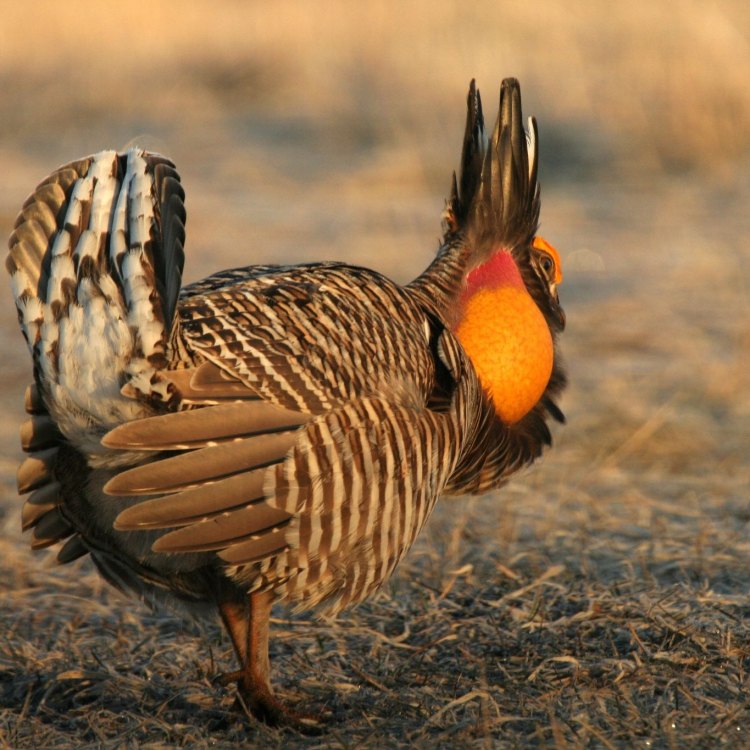
Greater Prairie Chicken
- Adult Size: 2.2-3.0 pounds (1-1.4 kg)
- Average Lifespan: 5-7 years
- Reproduction: Sexual
- Reproductive Behavior: Males perform elaborate courtship displays to attract females
- Sound or Call: Distinct booming sound made by males during courtship displays
- Migration Pattern: Short-distance migrants
- Social Groups: Males form leks, where they display and compete for females
- Behavior: Males perform elaborate courtship displays, including inflating the orange air sacs on their necks and making booming sounds
- Threats: Habitat loss, hunting, predation
- Conservation Status: Near Threatened
- Impact on Ecosystem: Important for maintaining grassland ecosystems
- Human Use: Hunting, tourism, scientific study
- Distinctive Features: Booming displays, orange air sacs on necks
- Interesting Facts: Greater Prairie Chickens were once one of the most abundant birds in North America but have declined due to habitat loss and hunting.
- Predator: Coyotes, foxes, hawks, owls
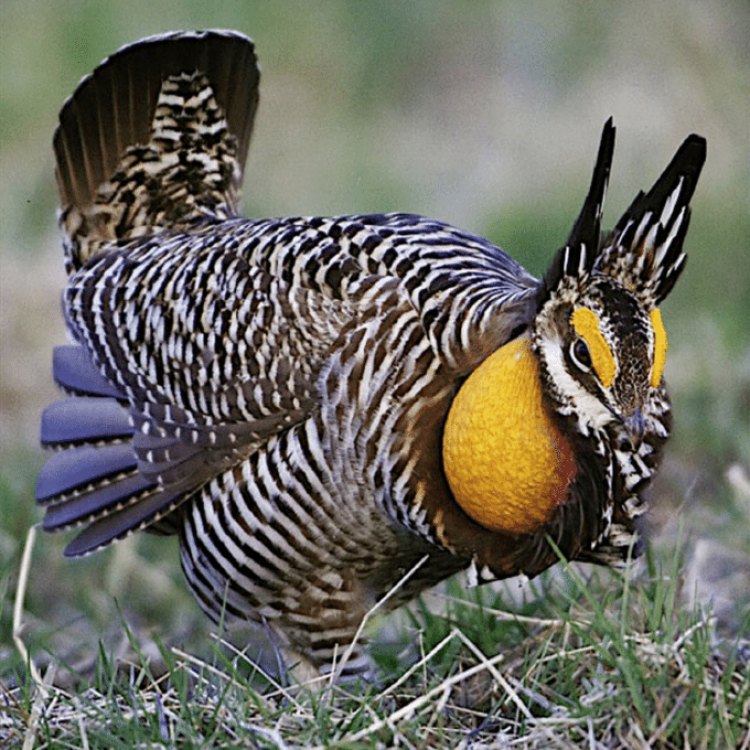
Tympanuchus cupido
The Fascinating World of Prairie Chickens
Nature is full of wonders, with creatures big and small living in harmony and playing vital roles in their ecosystems. One such creature is the prairie chicken, a bird that may not be as well known as other iconic species, but is no less fascinating. From its elaborate courtship displays to its distinctive features, the prairie chicken is an important and interesting species that deserves our attention and protection.The prairie chicken, scientifically known as Tympanuchus cupido, is a medium-sized grouse native to North America PeaceOfAnimals.Com. They are found in the central and midwestern regions of the United States and southern and central areas of Canada. They are mainly found in grassland habitats, such as prairies, but can also be found in farmlands and pastures.
In this article, we will delve into the unique features and behaviors of the prairie chicken, its importance in the ecosystem, and the threats it faces, as well as its impact on humans.
The Size and Lifespan of Prairie Chickens
The prairie chicken is a small but sturdy bird, with an adult size ranging from 2.2 to 3.0 pounds (1-1.4 kg). They have a plump body, small head, and short, rounded wings. Their feathers are mostly brown with varying patterns of black, buff, and white Pyrador.Prairie chickens have an average lifespan of 5-7 years in the wild, although they have been known to live up to 9 years in captivity. Like many animals, their lifespans are affected by various factors, including habitat quality, food availability, and predation.
Reproduction and Courtship Behavior
The reproductive behavior of prairie chickens is sexual, with males competing for females during the breeding season. The breeding season typically begins in March and lasts until early summer. During this time, males perform elaborate courtship displays to attract females.One of the most well-known behaviors of male prairie chickens is their booming displays. Males gather in open areas called leks, where they inflate the orange air sacs on their necks and make deep, low-pitched booming sounds. These displays can be heard from miles away and are essential in attracting females.
The booming displays also serve as a way for males to establish dominance and compete for females. The louder and more elaborate the display, the more likely a male is to attract a mate. Females will usually choose a mate based on the quality of the booming display, as it is an indication of the male's overall health and fitness.
Migratory Patterns and Social Groups
Prairie chickens are classified as short-distance migrants, meaning they move relatively short distances between their breeding and wintering grounds. They have been known to travel up to 30 miles during their migration.During non-breeding times, prairie chickens form social groups called flocks. These flocks can contain up to 200 birds, and they often roost together at night for safety and warmth. However, during the breeding season, males form leks, as mentioned earlier, and actively compete for females.
The Threats to Prairie Chickens
Unfortunately, prairie chickens face several threats to their survival. One of the biggest threats is habitat loss. As grasslands have been converted for agriculture and human development, the prairie chicken's natural habitat has significantly decreased. This loss of habitat not only affects their ability to find food and shelter but also impacts their breeding and courtship behaviors.Hunting has also played a role in the decline of prairie chickens. In the 19th and early 20th centuries, they were heavily hunted for their meat and feathers, causing a significant decline in their population. Although hunting is now illegal, poaching continues to be a problem in some areas.
Predation is another threat to the prairie chicken, with predators such as coyotes, foxes, hawks, and owls preying on them. Due to their relatively large size, they are also targeted by humans for predator control measures, as they compete with domestic gamebirds.
Another lesser-known threat to prairie chickens is wind energy development. As wind turbines become more prevalent in grassland habitats, they can disrupt prairie chickens' breeding and nesting behaviors, leading to declines in their population.
Conservation Status of Prairie Chickens
All these threats have taken a toll on the prairie chicken's population, leading to its classification as Near Threatened on the IUCN Red List. This classification means that the species is close to becoming endangered due to a significant decline in population.To address this conservation issue, various initiatives and organizations are working to protect the prairie chicken and its habitat. One example is the Prairie Chicken Initiative, a partnership program that provides technical and financial assistance to landowners to restore and enhance grassland habitats for prairie chickens and other grassland species.
The Importance of Prairie Chickens in Ecosystems
Prairie chickens may seem like simple birds, but they play a significant role in maintaining grassland ecosystems. As herbivores, they help control the growth of grasses and other vegetation, preventing them from growing too tall and becoming unmanageable for other animals.Their movements also help spread seeds and nutrients, aiding in plant growth and maintaining a healthy ecosystem. They also serve as a vital food source for predators, contributing to the balance of the food chain.
Prairie Chickens and Humans
Prairie chickens have not only fascinated scientists and nature enthusiasts, but they have also been a part of human culture for centuries. Native American tribes valued them for their meat and feathers, and they were also a popular game bird for early settlers.Today, prairie chickens still hold a special place in the hearts of hunters, as they are still legally hunted in some areas. They are also a popular species for birdwatchers, with tours dedicated to observing their unique courtship displays.
Scientists also study prairie chickens extensively, especially their behaviors and habitat preferences. Their presence in an area is often used as an indicator of the overall health and diversity of grassland ecosystems.
Distinctive Features and Interesting Facts
Apart from their distinctive booming displays, prairie chickens have other unique features and interesting facts that make them stand out. As mentioned earlier, they have orange air sacs on their necks, which they inflate during their courtship displays. These air sacs are used to amplify the booming sounds and make them more attractive to females.Another interesting fact is that Greater Prairie Chickens, a subspecies of the prairie chicken, were once one of the most abundant birds in North America. However, due to habitat loss and hunting, their populations have drastically declined, and they are now mainly found in protected areas.
In Conclusion
In a world filled with extraordinary creatures, the prairie chicken may not always be in the spotlight, but it is undoubtedly a fascinating and important species. From its unique behaviors and features to its crucial role in maintaining grassland ecosystems, the prairie chicken deserves our attention and protection.By understanding the threats they face and taking action to conserve their habitats, we can ensure the survival of this remarkable bird for future generations to enjoy. So let us appreciate and learn from the prairie chicken, and together, we can make a difference in protecting our natural world.

The Resilient and Iconic Greater Prairie Chicken
Disclaimer: The content provided is for informational purposes only. We cannot guarantee the accuracy of the information on this page 100%. All information provided here may change without prior notice.

